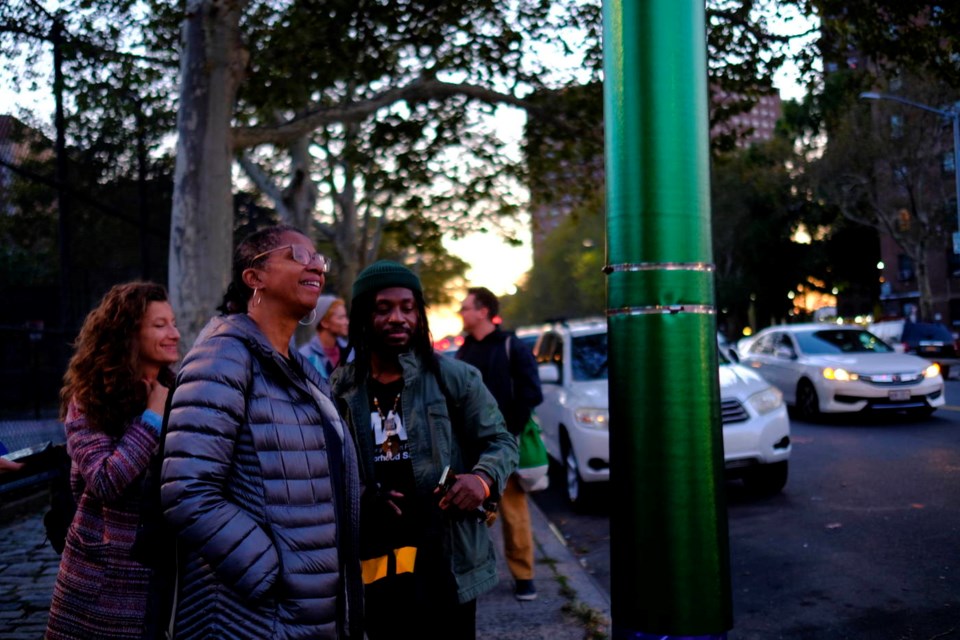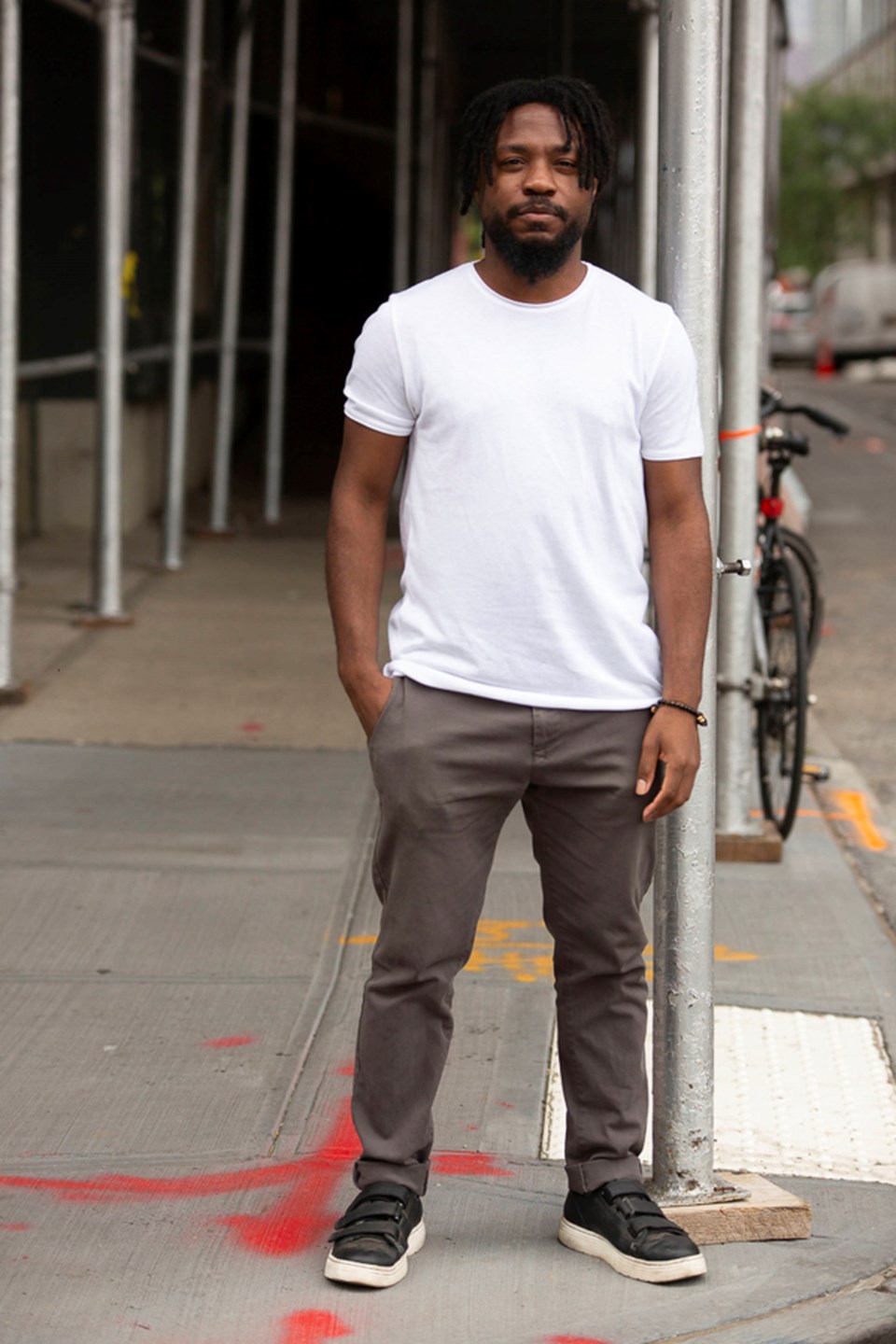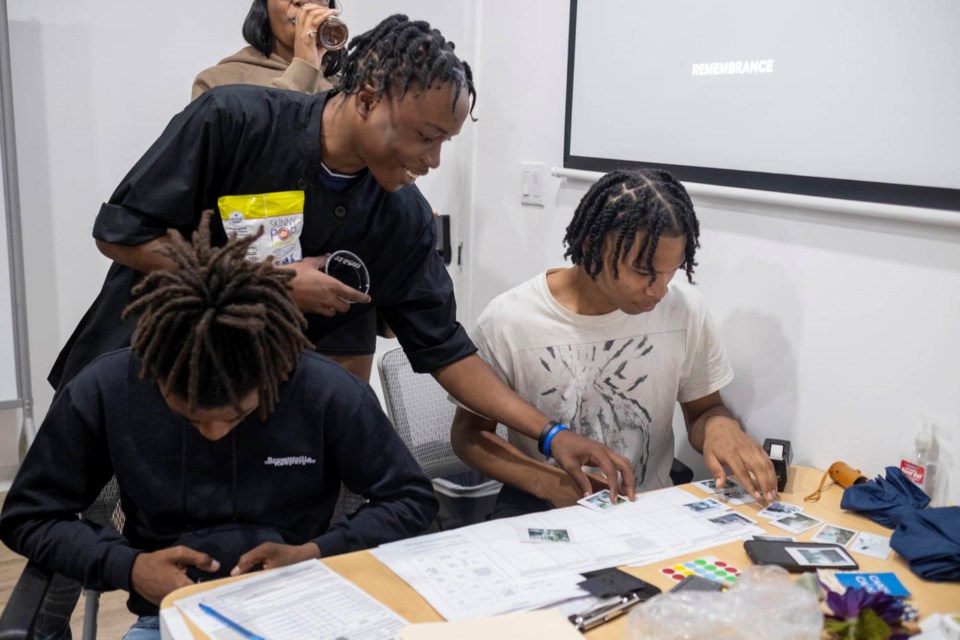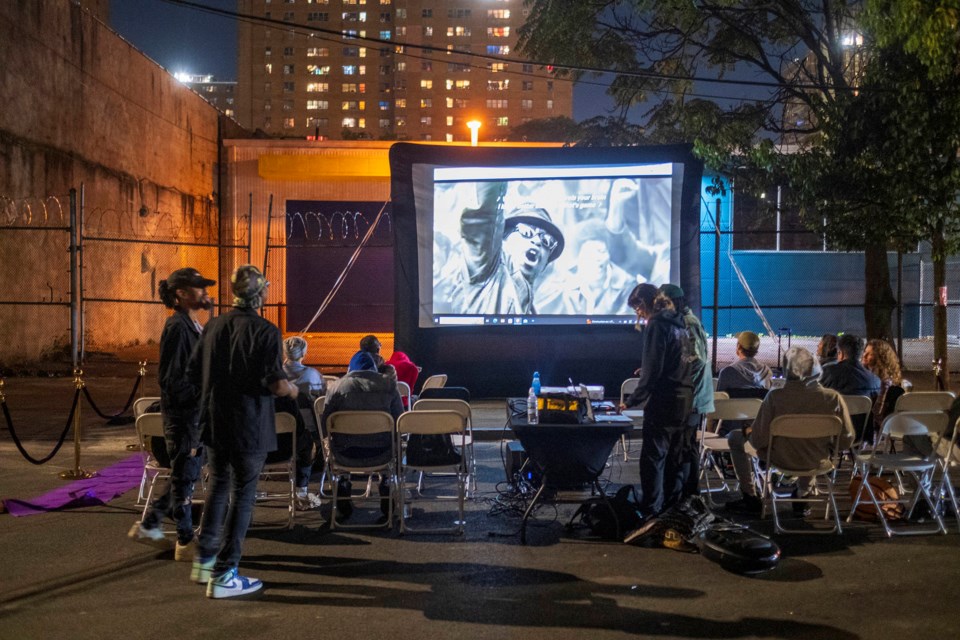Brooklyn artist Immanuel Oni has many titles — teacher, architect and community justice advocate, to name a few.
But, Oni's personal favorite title is "space doula," because his goal in life is to rebirth public spaces that have, as he puts it, “invisible but palpable scars" from loss or trauma.
One of these places is Brownsville, which Oni said is steeped in stigma for its high rates of drug use and gun violence. As part of this work, he helps Brownsville teens create new narratives of the area through workshops and permanent public art installations funded by More Art and co-organized by the Brownsville Community Justice Center.
The latest series of workshops, which wrapped up last month, featured several interdisciplinary art and history projects that ended with a student-led walking tour of Brownsville, complete with innovative, tech-savvy public artworks to reframe Brownsville's history. The larger-than-life installations celebrate the neighborhood's culture while also honoring the people in the neighborhood who have died.
“Just being able to see beyond the situation is one of the beginning aspects of healing, and sharing that vision with other people is another form of collective healing,” said Oni.
The workshops were split into three stages: remembering, reimagining and reclaiming. Both cohorts of 10 students chose three spaces in Brownsville with histories of violence and loss to transform through art projects.
Students researched the spaces and gathered photographs, and then created art, soundscapes, poetry, and images made using artificial intelligence based on their findings.
Both workshops concluded with a walking tour for the whole community, in which the students proudly displayed their “activations” of their spaces as part of a public participatory art piece Oni called "Beyond Memorial."
On the most recent tour in October, the students anointed a corner near the Rockaway Avenue Train Station with bubbles to cleanse it of its stigma. Then, they reintroduced a game played by the previous generations of children in the neighborhood at Dr. Green Playground, along with a plan for lighting installation to improve safety and access to the park. The tour concluded with a pop-up movie screening near the site of the former Pitkin Movie Theatre.
At each site, they dressed a light pole in colorful reflective wrap and then illuminated it as a memorial for local lives lost, which Oni likened to candles left at memorials but with lights that shine perpetually.
Pedestrians can scan a QR code on each memorial to hear and read about the rich histories and potential futures for these sites. These public artworks are permanent.
“Oni's work reimagines public housing complexes as sites of healing,” said Dylan Gauthier, More Art’s associate curator. “This is also a radical departure from how these places are so often depicted in our culture, as well as from the lived experience of many residents.”
Oni will lead more tours next year and hopes to reclaim new sites across the neighborhood. Down the road, he also wants to present his students’ visions to city agencies like NYC Parks Department and the NYC Department of Transportation. For now, his students are continuing work on the playground lighting redesign.
“That's what I'm hoping for, that there's an internal shift in how people see their neighborhood, and that this will ultimately motivate people to take action and try to reclaim spaces that have been deemed unsafe," Oni said.






.png;w=120;h=80;mode=crop)
